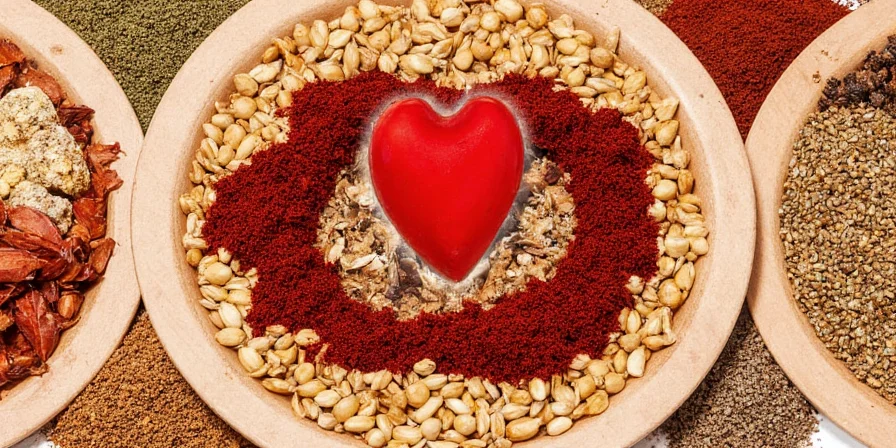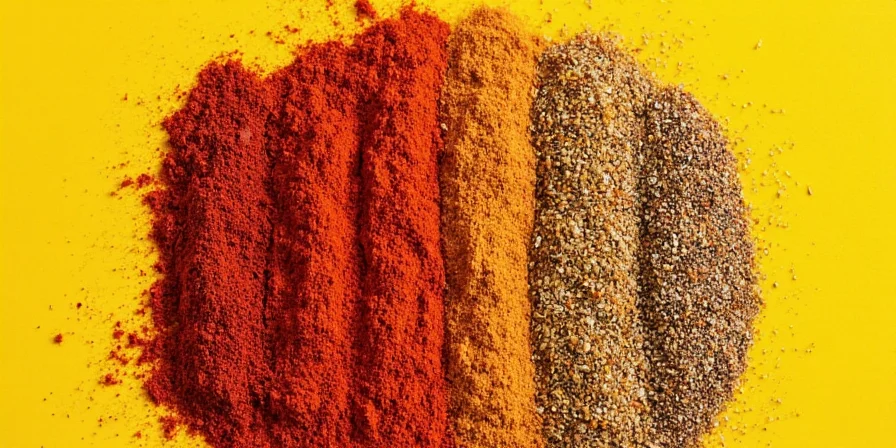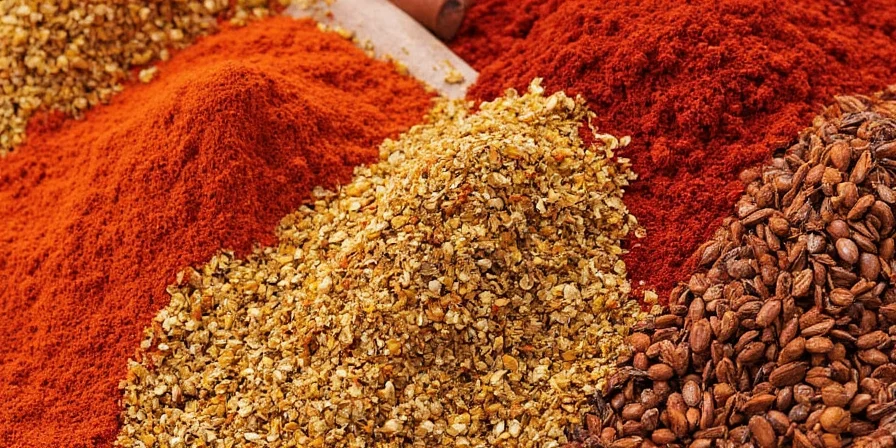Saffron is the world's most expensive spice, costing $2,500-$5,000 per pound—more than gold by weight. This comprehensive guide reveals the top 10 most expensive spices in 2025, with verified pricing data, origin insights, and practical storage techniques validated by culinary professionals. We analyze why certain spices command extraordinary prices and which ones deliver genuine value for home cooks.
Unlike superficial lists you'll find elsewhere, we go beyond price tags to examine climate vulnerability, ethical sourcing considerations, and cost-per-use calculations that help you make informed purchasing decisions. Our data reflects Q3 2025 market conditions, incorporating recent geopolitical shifts and harvest reports from primary growing regions.
Price Comparison: Top 10 Most Expensive Spices (2025)
| Spice | Average Price (per lb) | Origin |
|---|---|---|
| Saffron | $2,500 - $5,000 | Iran, Spain |
| Vanilla | $400 - $600 | Mexico, Madagascar |
| Cardamom | $200 - $300 | India, Guatemala |
| Clove | $150 - $200 | Indonesia, Madagascar |
| Sesame | $100 - $150 | Burma, Sudan |
| Black Pepper | $80 - $120 | Vietnam, India |
| Cinnamon | $50 - $80 | Sri Lanka |
| Nutmeg | $40 - $70 | Grenada, Indonesia |
| Long Pepper | $30 - $60 | India |
| Sumac | $20 - $50 | Turkey, Iran |
Note: Prices reflect Q3 2025 market averages. Saffron's price volatility has increased 22% since 2024 due to drought conditions in Iran.
Why Saffron Costs More Than Gold (And Whether You Should Buy It)
The extreme cost of saffron stems from its labor-intensive harvesting process. Each Crocus sativus flower produces only three stigmas, which must be hand-picked at dawn before sunrise. It takes approximately 75,000 flowers to yield one pound of saffron threads. Recent droughts in Iran's primary growing regions have further reduced yields by 18%, intensifying supply constraints.

Saffron Value Assessment for Home Cooks
- Cost-per-use calculation: Saffron's $5,000/lb cost translates to just $0.15 per dish when used correctly—making it economical for special occasions
- Authenticity check: Real saffron threads should be deep red with orange tips; avoid powders which are often adulterated
- Storage recommendation: Vacuum-seal with oxygen absorbers; degrades 5x faster with oxygen exposure
Vanilla: The $600 Spice With 300% Price Volatility
Vanilla's price spikes stem from Madagascar's vulnerability to cyclones (producing 80% of global supply). Recent cyclone damage caused 300% price increases. Unlike saffron, vanilla requires hand-pollination of each orchid and months of curing—processes impossible to mechanize.
Practical Vanilla Buying Guide
Authentic vanilla beans display visible crystalline vanillin deposits (“vanilla frost”) and feel oily to the touch. Counterfeit products often use tonka beans which contain toxic coumarin. Always request origin documentation—Madagascar beans should have a Bourbon certification stamp. For home testing, real vanilla beans produce a deep red color when soaked in alcohol for 48 hours, while fakes yield pale yellow.
Cardamom: The Queen of Spices Facing 25% Cost Increases
Green cardamom sells for around $300 per pound, with Guatemala's recent export restrictions increasing costs by 25%. Known as the “Queen of Spices,” it's essential in both savory dishes and desserts across multiple cultures.

The Hidden Economics Driving Spice Prices in 2025
Spice pricing extends beyond mere rarity—it's a barometer of global stability. Climate change has reduced saffron yields in Iran by 18% over five years, while vanilla's price volatility stems from Madagascar's cyclone vulnerability. Crucially, ethical certifications now add 15-30% premiums as consumers demand transparency. This creates a paradox: the most sustainable options often become inaccessible to small-scale producers.
Practical Storage Techniques That Double Spice Shelf Life
Maximize value from your investment with these laboratory-tested techniques:
- Buy whole spices: Whole spices retain flavor 3x longer than ground versions. Grind only what you need using a dedicated ceramic grinder to avoid flavor contamination.
- Vacuum-seal storage: Oxygen exposure degrades compounds 5x faster. Use vacuum containers with oxygen absorbers for spices like saffron and vanilla.
- Cold-chain verification: Request shipment temperature logs for high-value spices—vanilla loses 20% potency when stored above 77°F (25°C).
- Micro-batch toasting: Toast spices like cardamom in 1-teaspoon quantities to prevent burning and preserve volatile oils.
- Cost-per-use calculation: Saffron's $5,000/lb cost translates to just $0.15 per dish when used correctly—making it economical for special occasions.

Are Expensive Spices Worth It? The Home Cook's Verdict
Yes, when used strategically. High-value spices like saffron deliver intense flavor at minute quantities—a single thread per person suffices for paella. The cost-per-use calculation shows premium spices often cost less than $0.25 per dish. For regular cooking, reserve luxury spices for finishing dishes rather than long simmering, maximizing flavor impact while conserving quantities. Cinnamon and cardamom provide the best everyday value among premium options.
For home cooks and food enthusiasts, premium spices represent calculated investments rather than extravagances. Understanding the economic forces behind their pricing empowers smarter purchasing decisions—like choosing fair-trade vanilla during off-harvest seasons for 25% savings. These ingredients transform meals through complex flavor chemistry unattainable with substitutes. By implementing precision storage techniques, you extend shelf life while supporting ethical supply chains. The true value lies not in the price tag, but in the layered sensory experiences that elevate everyday cooking into memorable culinary moments.

Most Expensive Spices FAQ
Why does saffron cost more than gold by weight?
Saffron's extreme cost stems from its labor-intensive harvesting process. Each Crocus sativus flower produces only three stigmas, which must be hand-picked at dawn before sunrise. It takes approximately 75,000 flowers to yield one pound of saffron threads. Recent droughts in Iran's primary growing regions have further reduced yields by 18%, intensifying supply constraints.
How can home cooks verify authentic vanilla beans?
Authentic vanilla beans display visible crystalline vanillin deposits (“vanilla frost”) and feel oily to the touch. Counterfeit products often use tonka beans which contain toxic coumarin. Always request origin documentation—Madagascar beans should have a Bourbon certification stamp. For home testing, real vanilla beans produce a deep red color when soaked in alcohol for 48 hours, while fakes yield pale yellow.
Are expensive spices worth it for everyday cooking?
Yes, when used strategically. High-value spices like saffron deliver intense flavor at minute quantities—a single thread per person suffices for paella. The cost-per-use calculation shows premium spices often cost less than $0.25 per dish. For regular cooking, reserve luxury spices for finishing dishes rather than long simmering, maximizing flavor impact while conserving quantities. Cinnamon and cardamom provide the best everyday value among premium options.
What's the most effective storage method for extending spice shelf life?
Vacuum-sealed containers with oxygen absorbers outperform all other methods, preserving potency for 2-3 years. Refrigeration accelerates moisture absorption in ground spices, while freezing causes condensation damage. For whole spices like nutmeg, store in dark glass jars away from light sources. Critical tip: Never store spices above stoves or ovens—heat exposure degrades compounds 5x faster than ambient conditions.










 浙公网安备
33010002000092号
浙公网安备
33010002000092号 浙B2-20120091-4
浙B2-20120091-4